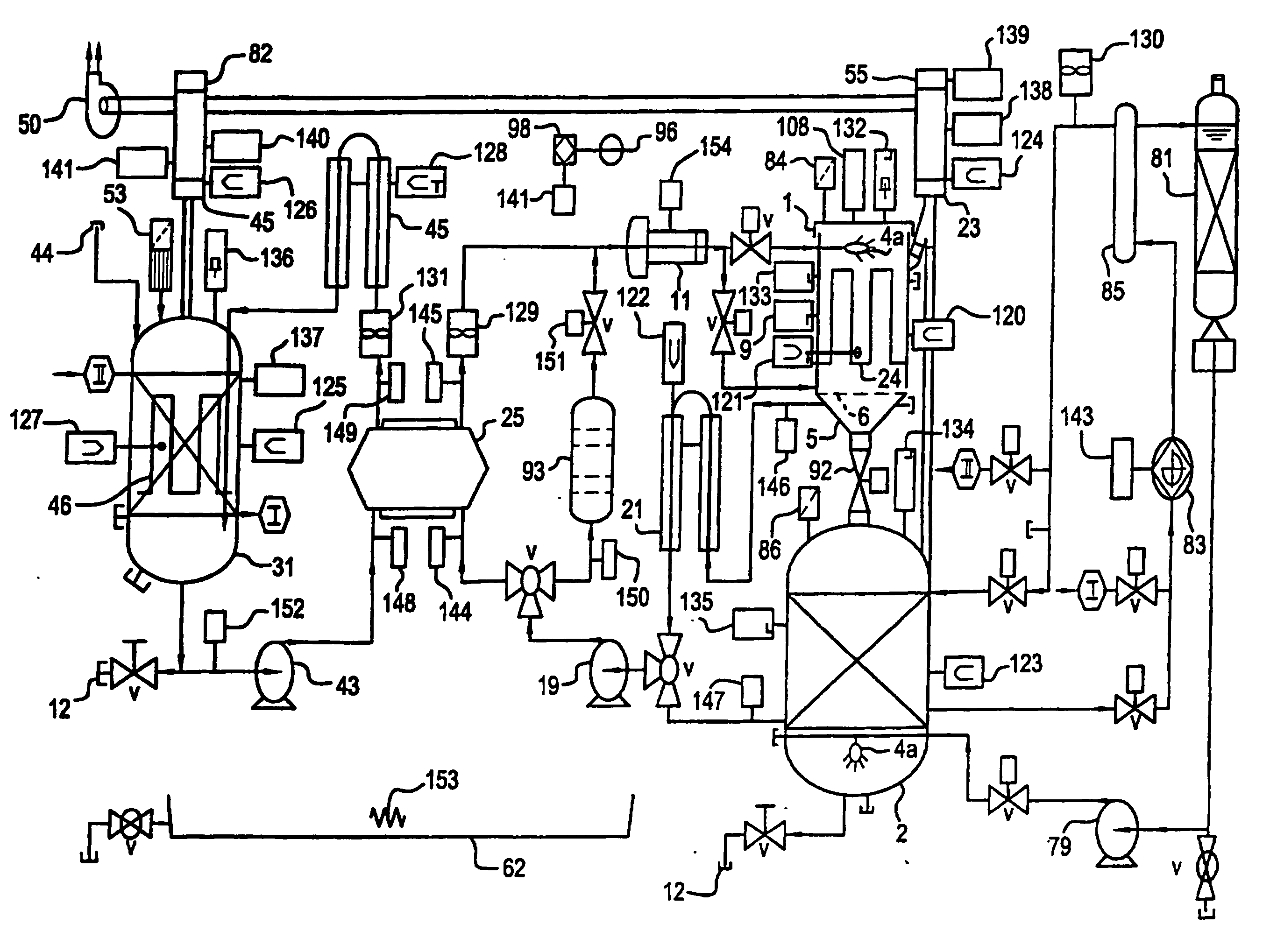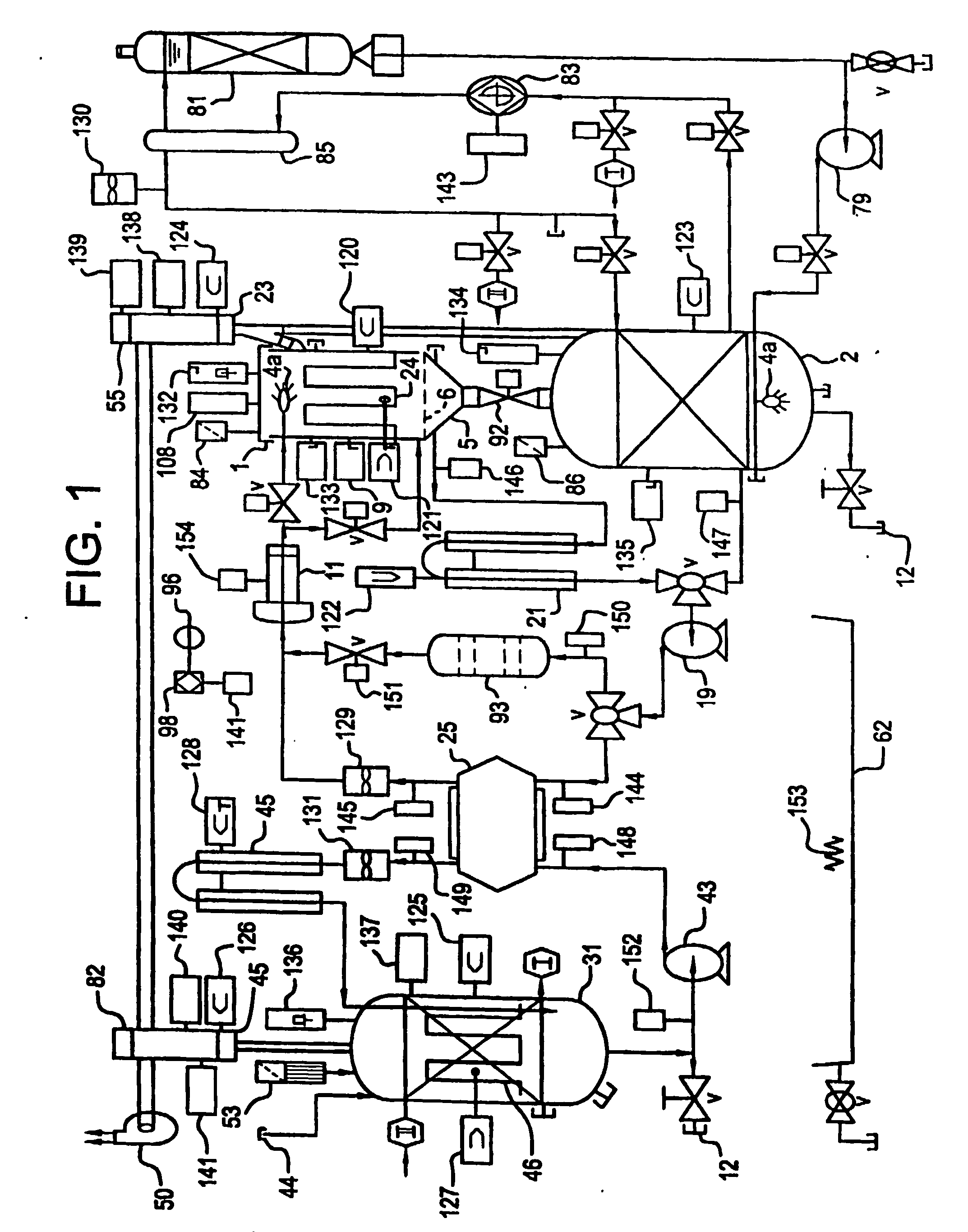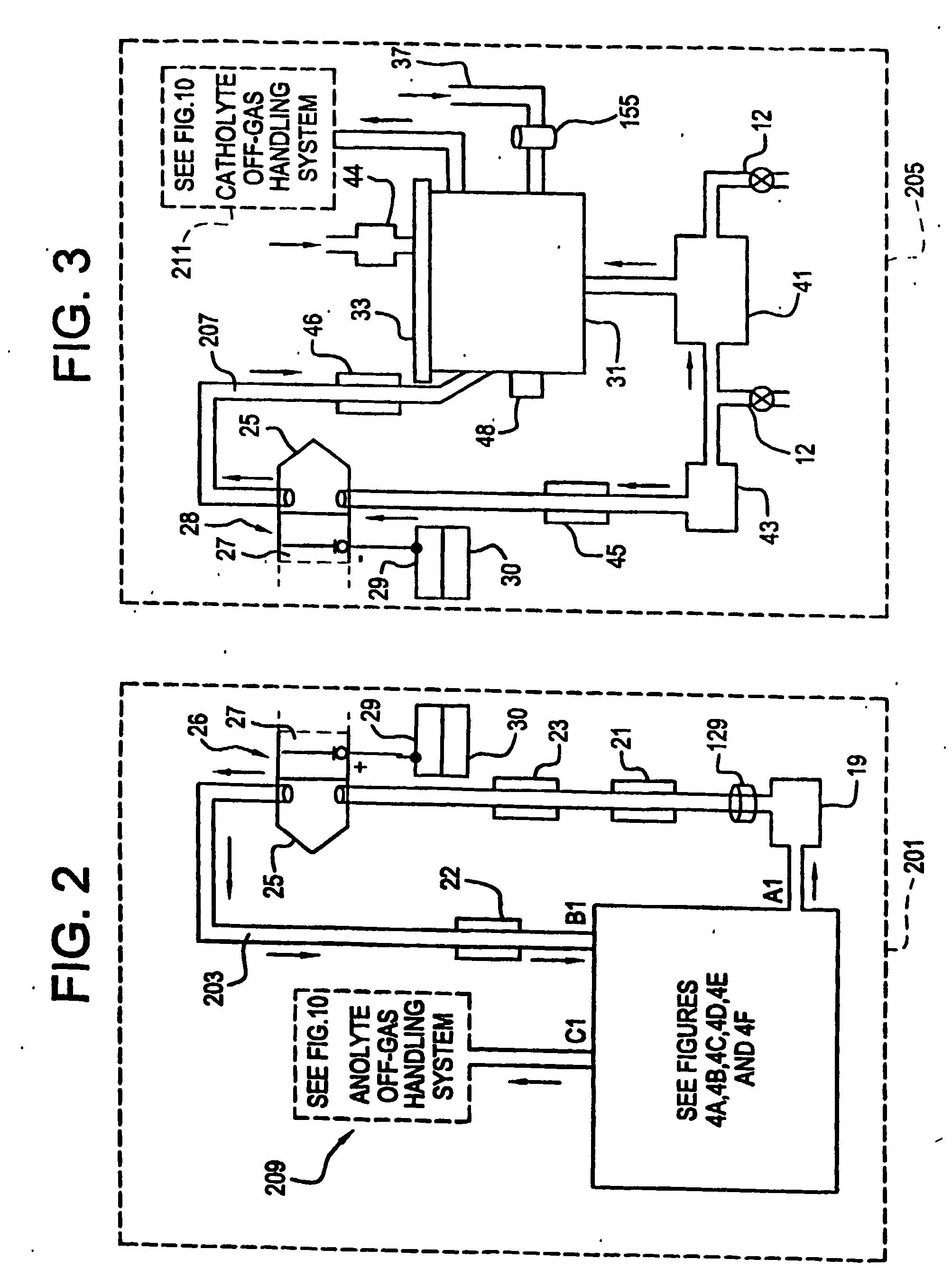Apparatus and process for mediated electrochemical oxidation of materials
a technology of electrochemical oxidation and apparatus, which is applied in the direction of sludge treatment by oxidation, water treatment parameter control, disinfection, etc., can solve the problem that the dumping of materials in landfills is a considerable risk for the users of these materials
- Summary
- Abstract
- Description
- Claims
- Application Information
AI Technical Summary
Benefits of technology
Problems solved by technology
Method used
Image
Examples
first embodiment
[0164] an electrochemical cell 25a is a ceramic box 270 and lid 271 styles, shown in FIG. 6A. Anolyte solution 203 enters the electrochemical cell 25a through the lid 271 by tubing 274, from the pump 19 and exits through tubing 276. Catholyte solution 207 enters the electrochemical cell 25a through input tubing 278 from pump 43 and exits through output tubing 280 in the lid. The entrance and exiting through the lid eliminates the source of leakage in the current designs. The box 270 is made of a molded ceramic as a unibody construction which is significantly less expensive to construct than the current state-of-the-art. The lid 271 is clamped to the box using nuts and bolts with the bolts passing through clamp holes 60. The lid 271 includes a gasket 272 thereby creating a liquid tight seal. The ease of access to the interior of the electrochemical cell 25a significantly improves the maintenance of the electrochemical cell 25a. The inside surfaces of the ceramic box 270 and the lid 2...
second embodiment
[0165] this electrochemical cell 25a bonds oxidation resistant ion selective membranes 27a (e.g., Nafion™) over the interior walls that are serving as the ceramic membranes 27a The addition of these membranes 27a supplements the performance of these ceramic membranes 27a.
third embodiment
[0166] A third embodiment uses a second electrochemical cell 25b, FIG. 6B, which has a pier box 270a and lid 284. The materials used for the FIG. 6B embodiment are selected from the following list of materials: fiberglass, polypropylene, metals and composite metals. The interior surfaces of this design will have PTFE coating to protect these surfaces from the oxidizer in the anolyte solution 203 and the acids or alkaline in the catholyte solution 207. The anodes 26 and cathodes 28 slide into electrode slots 56 in the electrochemical cell 25b walls with the electrical connection to them coming through the lid 284 to an anode bus 52 and cathode bus 54. The membrane 27 is held by membrane frame 58. The walls of the box have ridges 277 and grooves 279 (shown in FIG. 6A) made into them to promote turbulent flow thereby reducing adverse boundary layer related phenomena at the anodes 26. In another embodiment of this configuration the box 270a and lid 284 are composed of metal(s) and or me...
PUM
| Property | Measurement | Unit |
|---|---|---|
| boiling point | aaaaa | aaaaa |
| boiling point | aaaaa | aaaaa |
| pressure | aaaaa | aaaaa |
Abstract
Description
Claims
Application Information
 Login to View More
Login to View More - R&D
- Intellectual Property
- Life Sciences
- Materials
- Tech Scout
- Unparalleled Data Quality
- Higher Quality Content
- 60% Fewer Hallucinations
Browse by: Latest US Patents, China's latest patents, Technical Efficacy Thesaurus, Application Domain, Technology Topic, Popular Technical Reports.
© 2025 PatSnap. All rights reserved.Legal|Privacy policy|Modern Slavery Act Transparency Statement|Sitemap|About US| Contact US: help@patsnap.com



